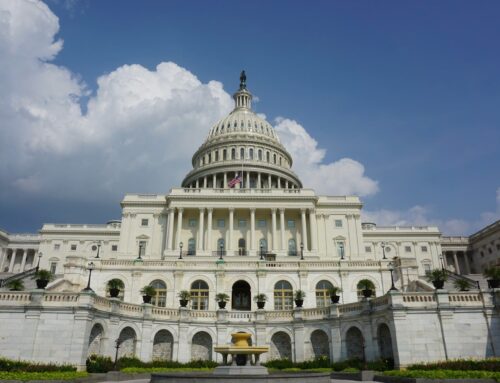Here’s a quick rundown of the current budget situation in Congress. Both the House and Senate are still working to pass the dozen appropriations bills for Fiscal Year 2024; the House has passed seven and the Senate has passed three. Pursuant to the second Continuing Resolution (CR) for fiscal year 2024, Congress now has two separate expiration dates for two separate sets of appropriations bills.
The first expiration date in the CR, January 19, 2024, would apply to the programs covered by the Agriculture, Energy-Water, Military Construction-VA, and Transportation-HUD bills. The second expiration date, February 2, 2024, would apply to the programs covered by the Commerce-Justice-Science, Defense, Financial Services-General Government, Homeland Security, Interior-Environment, Labor-HHS-Education, Legislative Branch, and State-Foreign Operations bills.
The House and Senate continue to be far apart on a supplemental spending request. On December 6th, the Senate failed to move forward on a procedural vote on a nearly $111 billion supplemental package. The stalled Senate package hews closely to President Biden’s most recent $105.8 billion spending request submitted to Congress on October 20th. The Senate bill includes military, economic, and humanitarian assistance for Ukraine, Israel, and other regions. It also contains billions worth of emergency spending for border security initiatives and international concerns in the Indo-Pacific region.
The House has passed its version of a security supplemental focused exclusively on the conflict in Israel on November 3rd. With a price tag of $13.4 billion, the Israel Security Supplemental Appropriations Act, 2024, included no military or humanitarian assistance for Ukraine nor funding for U.S. border security. The House did propose to direct $300 million to Ukraine through the Operations and Maintenance, Defense Wide account as part of the Ukraine Security Assistance and Oversight Supplemental Appropriations Act, 2024, adopted on September 28th.
Any final supplemental spending bill may grow even larger than the current military and humanitarian spending package for Ukraine and Israel. On October 25th the administration released a $54 billion list of “Critical Needs” in response to various U.S. domestic emergencies or temporary accounts that have run out of spending authority. These spending requests range from $23.5 billion for emergency response to natural disasters, to $16 billion for one more year of pandemic subsidies for childcare, to $1.55 billion for Health and Human Services to respond to the fentanyl crisis. Members of the House and Senate have expressed support for some of these provisions so it is likely some amount of disaster spending for domestic needs will be enacted.
For a detailed breakdown of the Administration’s spending request and the House and Senate supplementals see here: Complete Supplemental Request December 2023 (Excel doc)
The main hurdle to enacting a Senate supplemental is that Senate Republicans have outlined a set of U.S. border security proposals as a condition for sending more aid to Ukraine and Israel. Central to their demands is the continuation of the U.S.-Mexico border wall construction and to significantly restrict grant of temporary permission to enter the United States for urgent humanitarian reasons and make it more challenging for migrants to qualify for asylum. They also advocate for a return to family detention at the border and insist that asylum applicants wait in Mexico. These demands, integral to the talks about the supplemental funding request, are facing considerable opposition from Democrats and the White House. However, Senate Democrats are reportedly open to making it harder for migrants to seek asylum to secure Republican support for aiding Ukraine and Israel.
Meanwhile, and possibly a harbinger of things to come, the funding levels proposed by the House and Senate for FY 2024 differ significantly. The House has set topline funding levels at the FY 2022 level – $1.471 trillion for base funding – which is $119 billion below the official Fiscal Responsibility Act (FRA) levels. While the Senate is working to appropriate $1.627 trillion, which is $37 billion above the FRA levels. Passed as part of the debt ceiling standoff in May, the FRA suspended the federal debt limit until January 1, 2025, set new discretionary spending limits for fiscal years 2024 and 2025, and introduced measures to encourage Congress to pass regular appropriations, with penalties for failing to do so.
The discrepancy between the House and Senate bills further complicates the situation, as these differences in funding levels and allocations will need to be reconciled before the appropriations bills can be enacted. The struggle to pass a full spending bill is likely to continue into early next year, increasing the probability of a partial or full government shutdown.










Get Social